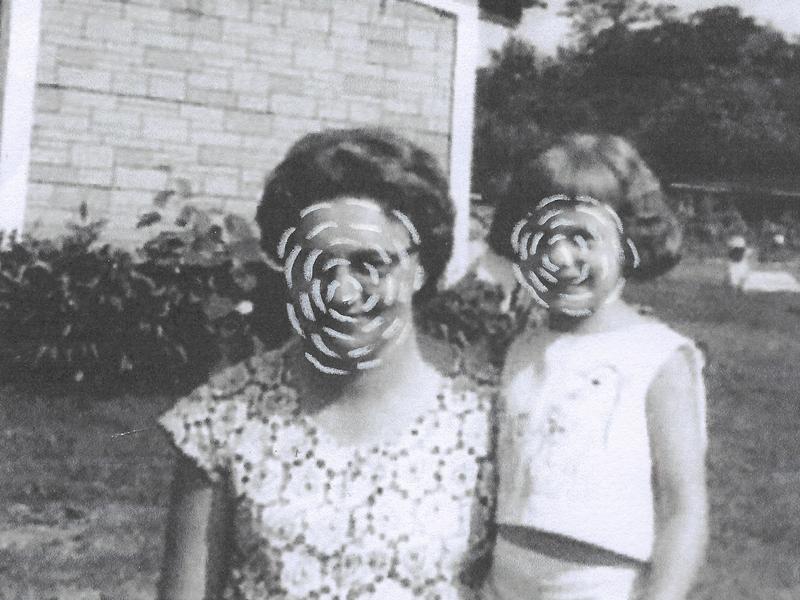Artist Explores Grief, Memory And Loss Through Photographs

In 2018, Amy Parrish wrote a letter to her grandmother, who was struggling with dementia, but just a few months later, her grandmother died before Parrish got around to sending it.
Feelings of grief, guilt and nostalgia suffuse her project "Check the Mail for Her Letter," a series of photographs, modern and vintage, that explore themes of memory and loss in Parrish's life and her grandmother's.
The family portraits that make up the collection date back to Parrish's grandmother's childhood. She uses gouache, an opaque watercolor paint, and wax pencil to alter the images, hiding faces, body parts and other details — at times inviting the viewer to focus on a specific gesture, at others to wonder at what is lost in the images.
"Here, perhaps forgetting specific details of a particular day, I wonder if Grandma was able to recall the tender way he caressed her arm," Parrish writes in the caption of one of the images, a photograph of her grandmother and grandfather together. Soft marks obscure much of the photograph, except where two arms are gently intertwined.
Toward the end of her grandmother's life, Parrish worried as much about the stress that dementia was causing her grandmother as she did about the memory loss itself. Parrish says that on her final visit in 2017, her grandmother worriedly asked her, "What would you have done if I didn't recognize you?"
Later that same visit, Parrish says, her grandmother mistook her for her aunt. "She slipped into a different reality," she says.
During this same visit, Parrish says, her grandmother insisted on needing to check the mail at an old farmhouse for no reason. The connection between her grandmother wanting to check the mail and the letter that was never sent — though unconnected events — is where Parrish builds poetic tension questioning the strangeness of the link. She asks: "Could she have possibly known that I would be sitting here today with an unsent letter?"
Parrish likens some of the episodes of dementia that her grandmother experienced to dreams.
"She described an awareness of slippages that made me think of the way that we experience dreams, except hers came while awake."
This sense of dreaminess informs the vintage images and is also a common thread throughout the modern photographs that show glimpses of Parrish's life during the time her grandmother was fading away and just after she died.
A working artist, Parrish spent time traveling without a home base during a yearlong period where she lost both her grandmothers and an uncle. Because of this transience she wasn't able to spend time with her loved ones before their deaths and wonders about the cost.
"There are many days when I ask myself, 'Was it worth it?' When, in those moments, I would give anything to be able to share one last goodbye," says Parrish.
Parrish's often personal notes about her memories, dreams and experiences, posted to her Instagram account, are sometimes raw like an open wound and other times poetic with a sense of healing. She shares details about her experiences as a transient artist camping in an old school bus in New Mexico, noting memories that now haunt her with connections to her grandmother.
"At times the lines between reality and delusion seem blurred," Parish says in a post of one of her modern photographs that shows three panels of increasing blurriness. In another modern image, Parrish captures a dream she had once, where her grandmother was trying to communicate to her through a photograph in a patch of shimmering light.
"In the letter I wrote but never sent to my grandmother, I told her about my dream," recalls Parrish. At that point she didn't know they would never communicate again.
Roughly two years after her grandmother's death, Parrish started working on the project compulsively as she was looking through old photos and felt emotional floodgates opening.
"I wavered between feelings of guilt for not being there, while also considering the effects of delusion and memory loss," says Parrish.
She dug through the photos looking at gestures and thinking about how memory works.
"It became a therapeutic way of maneuvering through my own internal space," she says.
Images from "Check the Mail for Her Letter" are currently viewable in an online exhibition.
9(MDEwODYxNTQyMDEzNjAxODk2Nzc2NzNmYQ001))